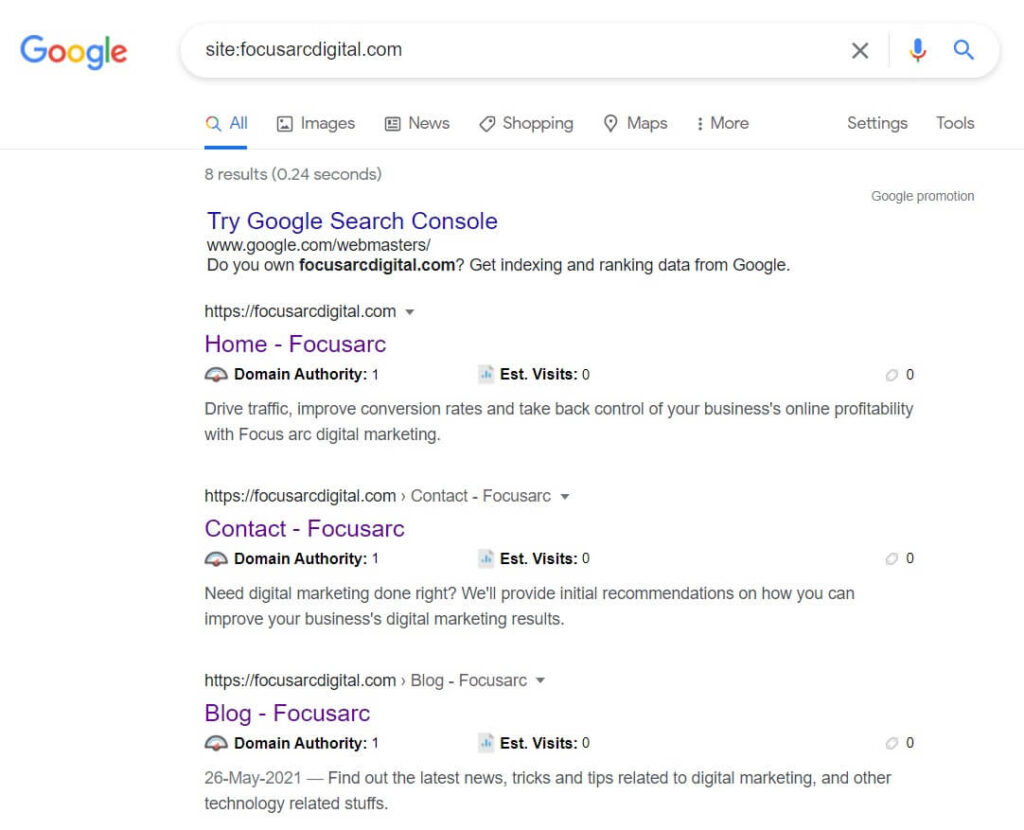
On-page SEO belongs to the most essential aspects of website optimization. The question is: How to get started with on-page optimization? And how to continue? We’ll guide you through the key things you need to look at if you want to optimize your website properly.
Google organic search is responsible for 59.2% of the world’s web traffic.
-And On-Page SEO plays a crucial role in optimizing webpages to rank good in organic searches. This post will take you deep into the world of On-Site SEO and explain different factors associated with this.
What is On-Page SEO?
On-page SEO is the practice of optimizing web page content for search engines and users. Common on-page SEO practices include optimizing title tags, content, internal links and URLs.
With on-page optimizations, you aim to make your website more usable and valuable to users to improve your rankings or visibility in search results on Google, Bing, and other search engines.
Why is On-Page SEO Important?
Does traditional on-page SEO still make a difference in 2021?
Yup!
In fact, Google’s own “How Search Works” report states that:

Even though Google is MUCH smarter than it was back in the day, they still use old school stuff (like looking for a specific keyword on your page).

What are on-page SEO factors?
On-page optimization consists of many steps.
Here’s a list of the 12 important on-page SEO factors that have a direct or indirect influence on the success of your website.

- Crawlable website – the website is crawlable and indexed by search robots
- Site architecture – there is a clear structure and logic in the architecture of the pages
- Quality outbound links – the website is linking to high-quality external resources
- Website speed – the pages load fast on all devices
- Mobile friendliness – the page renders on every device and browser properly
- Use of HTTPS – the website is secured and has an SSL certificate
- User-friendly URLs – URL addresses are simple and UX-friendly
- Well-targeted content – the page targets a specific search intent
- Keyword optimization – the page uses relevant keywords in relevant places
- Image optimization – the images are optimized for search engines
- Readability and UX – the text is well-optimized, readable and UX-friendly
- Click-through rate – the page has optimized title tag and meta description
Things such as HTTPS or page speed are confirmed ranking factors. It means Google uses them directly in their ranking algorithm.
But many of these are not used by Google, or at least not directly.
The thing is – whether Google uses these factors as a ranking factor or not, they are important because they improve the overall user experience and provide value for the website visitor.
Tip:
There’s another quick way to see whether your website is indexed. Just use this search operator in Google:
- To see the approximate number of indexed pages: site:yourdomain.xy
- To see if a specific page is indexed: site:yourdomain.xy/page

If you see a suspiciously low number of indexed pages or you don’t see any pages at all, you may have a problem with indexation.
Link to quality external sources
Many SEO beginners hesitate to link to other websites. They think their “link juice” will spill out to other websites and their authority will suffer.
The truth is, linking out can actually be beneficial for you.
John Mueller from Google said in the Webmaster hangout:
“Our point of view, external links to other sites, so links from your site to other people’s sites isn’t specifically a ranking factor. But it can bring value to your content and that in turn can be relevant for us in search.”
Improve page loading speed
Page speed is a ranking factor, and the reason is clear. In this fast era, nobody is willing to wait for information from a site if there are other faster options.
What happens if you open a page and wait more than, let’s say 3 seconds? You probably hit the back button and look for another result.
Google collects these signals and takes them into consideration in their algorithm.
To test the page speed, you can use PageSpeed Insights from Google. Besides the speed score, you’ll also get tips and hints on how to improve the site speed.
Tip:
PageSpeed Insights will only show you results for one page at a time. Therefore, the results apply only to this page. Choose multiple page types (homepage, blog post, product page) and test them all.
Summing Up!
On the concluding note, we hope you would have understood what on-page SEO is and how it plays a key role in optimizing the online presence of websites.
In case you want to learn SEO more comprehensively, and become a certified SEO expert, enrol in the most updated SEO course now.
To read more articles about Digital Marketing, click here.